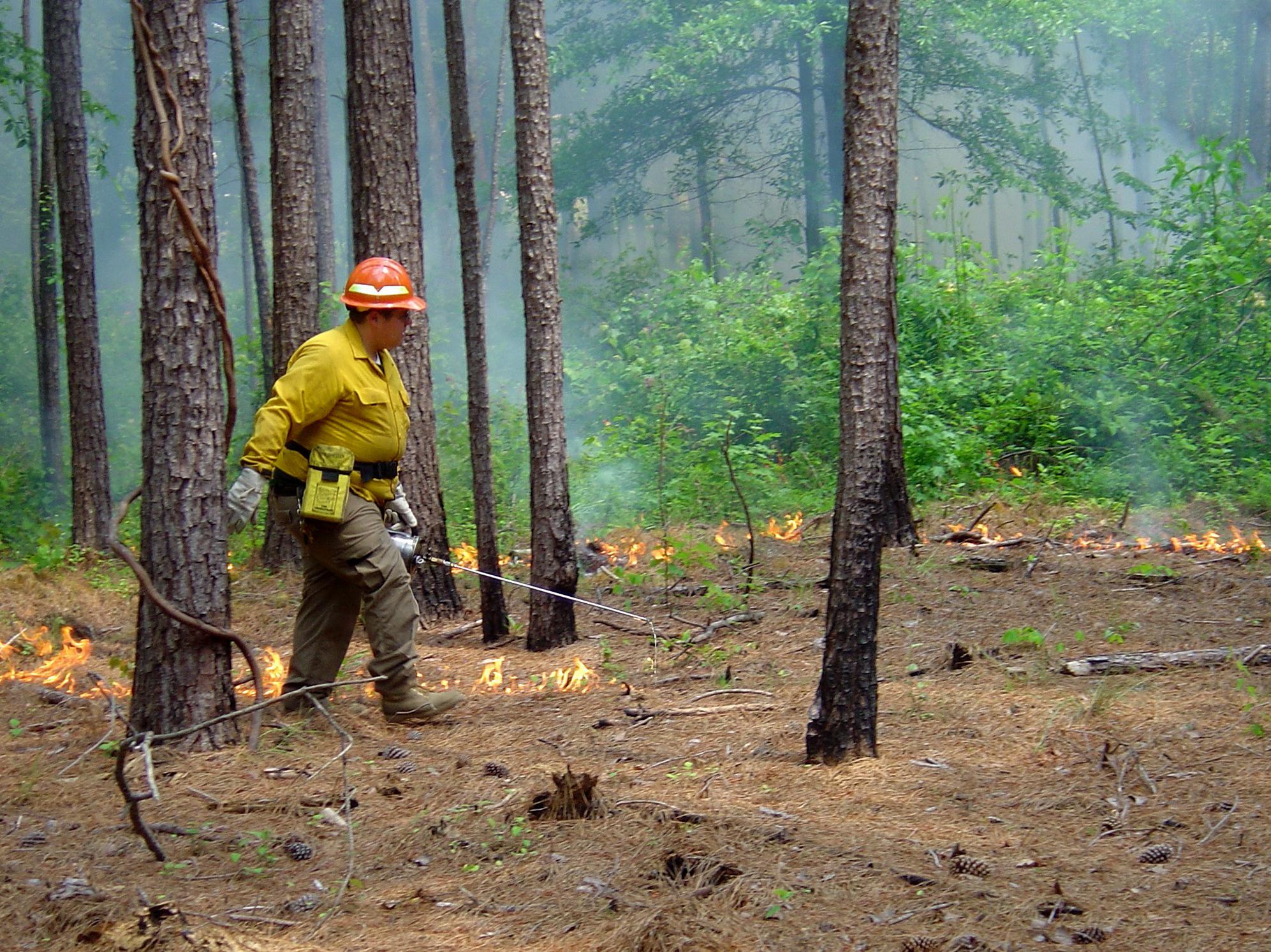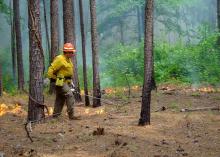Information Possibly Outdated
The information presented on this page was originally released on March 8, 2019. It may not be outdated, but please search our site for more current information. If you plan to quote or reference this information in a publication, please check with the Extension specialist or author before proceeding.
Prescribed burning offers many benefits
VERONA, Miss. -- Few folks may realize that Mississippi forests are adapted to periodic, low-intensity fires.
Native Americans used fire to manipulate their surroundings. They wanted open areas for crops and open forests for hunting. Since the last ice age, north Mississippi’s shortleaf pine and upland oaks and south Mississippi’s longleaf pine evolved with frequent, low-intensity fire.
The Mississippi Prescribed Burning Act of 1992 codified prescribed burning as a property owner right. Liability is limited as long as the landowner follows the guidelines set forth in the law. Principally, prescribed burning should be in the public interest. Other guidelines are in the Mississippi State University Forest and Wildlife Research Center resources bulletin FO351, “Legal Environment for Forestry Prescribed Burning in Mississippi.”
So, what uses for prescribed burning are considered in the public interest? First, fuel and hazard reduction are benefits from prescribed burning. Mississippi forests grow profusely with our warm climate, long growing season and fertile soils. Furthermore, periodic prescribed burning replaces the seasonal fires that shaped the evolution of our forests.
Second, using prescribed burning for vegetation management is in the public interest. This use of burning is particularly necessary in pine forest management. Hardwoods often encroach pines in plantations. Consequently, they compete with the pines for sunlight, nutrients and water. If left unchecked without fire, hardwoods would eventually dominate the forest on uplands.
Third, prescribed burning is an excellent way to enhance wildlife habitat, which is in the public interest. Enhancing wildlife habitat with burning is often an objective in thinned pine stands. The increased spacing between trees after thinning allows sunlight to reach the forest floor. However, the accumulated layer of leaves and branches insulates the soil and prevents the germination of the native seed of nutritious forbs that lie dormant in the topsoil. Removing the litter layer with fire allows sunlight to warm the soil, thus initiating germination of this native seed. The plants that grow after a fire are readily available to all wildlife for food and cover.
Finally, prescribed burning is useful in site preparation for regenerating forests. The investment private landowners make to regrow their forest after harvest is considered a benefit to all citizens. Timber is Mississippi’s most valuable crop and its second most valuable commodity after poultry. Regeneration is what makes Mississippi forests a renewable resource.
You may have noticed that these public interests align with a forest landowner’s goals in using prescribed burning. Forestry is important in Mississippi, and the sound and sustainable management of that forest resource is a benefit to everyone.
For those interested in learning more, there will be a Prescribed Burning workshop in Pontotoc on March 30. Contact James Shannon at 662-489-3910 or by email at james.shannon@msstate.edu to register by March 21.

Editor’s Note: Extension Outdoors is a column authored by several different experts in the Mississippi State University Extension Service.



